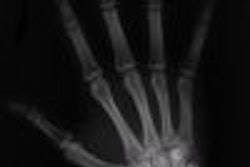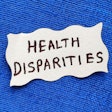Successful gamblers know the odds of any bet, based on hard data underlying the laws of probability. Accurate data may be just as crucial to radiology facilities, if they're to be successful in preserving their revenue streams.
Accuracy is a mantra of sorts for Pam Kassing, who is senior director of the department of economics and health at the Reston, VA-based American College of Radiology. Perhaps it is because she believes that maintaining accurate cost data now could help improve radiology reimbursement in the future. Kassing discussed reimbursement issues earlier this week at the 2002 Radiology Business Management Association meeting in Las Vegas.
In an effort to keep federal healthcare expenditures down, the Centers for Medicare and Medicaid Services has been putting the squeeze on healthcare services providers, and radiology hasn’t been spared. For the 2003 Medicare Physician Fee Schedule, CMS has proposed a 3% cut in global reimbursement for radiology services, a 5.4% cut in Medicare’s conversion factor, and a 4.6% cut in technical component payments, Kassing said.
The cut in the conversion factor, a multiplier used to calculate physician payments, is the largest since the resource-based relative value scale system (RBRVS) was implemented in 1992. The reduction is related to the recent decline of the U.S. gross domestic product (GDP), a major component in the formula used to determine the factor, according to the Web site of the American Academy of Physical Medicine and Rehabilitation of Chicago.
The ACR is working with other medical specialties to roll back the cuts, Kassing said, uniting behind a bill sponsored by Sen. James Jeffords (I-VT) that would accomplish this. The outcome of the legislation will probably have to wait until December, due to uncertainty over the makeup of the House and Senate after the November elections, according to Kassing. At the moment, the scuttlebutt in Washington, DC, is favoring a 2% increase in the conversion factor.
"That would be a welcome relief," she said.
The conversion-factor formula is still in need of a permanent fix, however. To that end, the Medicare Payment Advisory Commission (MedPAC) has proposed repealing the current formula, based on keeping payments within a sustainable growth rate, and replacing it with a formula based on the costs physicians incur when providing healthcare services.
Another important focus for the ACR is reforming the way CMS calculates payments for the technical component of radiology services. Essentially, radiology technical-component payments that don’t have a physician work component come from the "zero work pool," an area of Medicare’s budget that also includes other specialties like medical oncology and radiation oncology that don’t have complete data on the costs involved in supplying the technical-component services.
The problem with this approach is that the pool is a zero-sum game, and changes in payments to one specialty can have a ripple effect on other specialties in the pool. Medical oncologists this year collected enough data to enable their specialty to be pulled out of the pool, and the impact of their withdrawal could have a dramatic effect on those specialties that are left -- like radiology.
The ACR would like to see radiology and radiation oncology moved out of the zero work pool, which could stabilize annual technical component payments, Kassing said. To that end, the society is sponsoring a survey of radiology and radiation oncology practices that would collect accurate data on the clinical times, supplies, and expenses involved in providing their services. The survey will probably begin early next year for radiation oncology facilities first, with imaging centers to follow.
The ACR already has data for some 400 current procedural terminology (CPT) codes commonly used in radiology, but needs data for another 1,200, Kassing said. To that end, the ACR is enlisting the help of the RBMA in raising awareness of the importance of the data-collection effort, which needs to be completed by August 2003 in order to have an impact on Medicare’s 2004 fee schedule.
Can imaging facilities count on these initiatives to protect and improve their revenue streams? That’s a gamble that even a grizzled Vegas casino denizen would probably avoid.
"The truth is, you and I could meet down at the roulette table and throw some numbers tonight, and really your guess is just as good as mine," Kassing said. "But we are really trying to do the best we can to make this come out as positive as we can for 2003."
By Brian CaseyAuntMinnie.com staff writer
October 23, 2002
Copyright © 2002 AuntMinnie.com



















